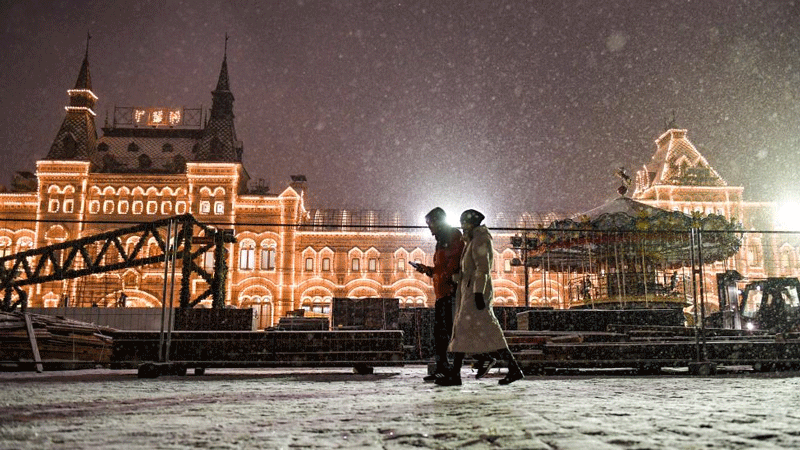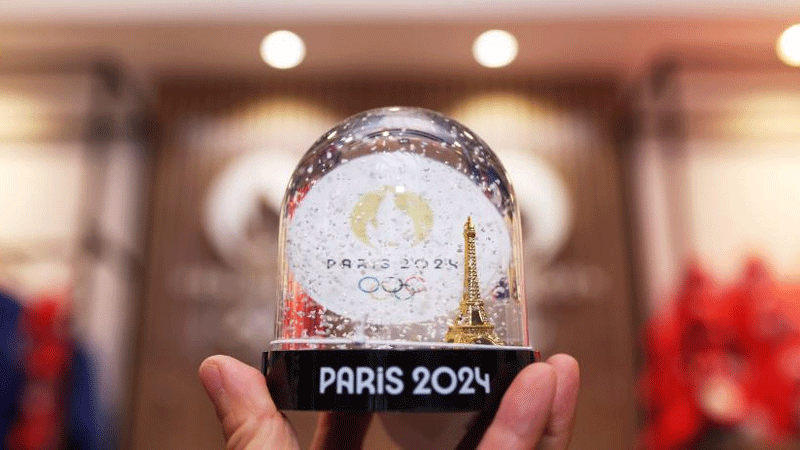Craftsman explores ways to revitalize millennium-old Dunhuang embroidery
Liu Yunfan, an inheritor of Wushan embroidery, an intangible cultural heritage item in Tianshui city, northwest China's Gansu Province, has made it his mission to revive embroidery works that feature Dunhuang elements.
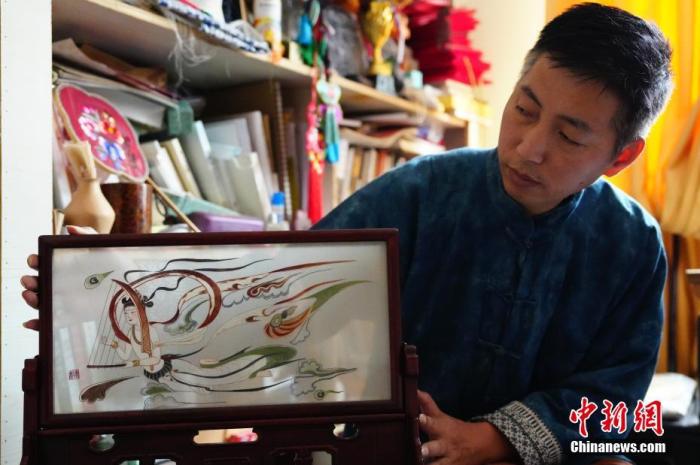
Photo shows an embroidery work by Liu Yunfan, an inheritor of Wushan embroidery, which is an intangible cultural heritage item in Tianshui city, northwest China's Gansu Province. (Photo/Xie Bingxi)
Dunhuang embroidery entered a golden period of growth during the Tang Dynasty (618-907). The needlework used in Dunhuang embroidery is less complicated compared to that of other embroidery techniques, and its themes are diverse, including Buddha images, sutras and mural paintings.
A larger number of Dunhuang embroidery works dating back to the Tang Dynasty have been unearthed in caves for preserving sutras, compared with those unearthed in other locations. Various techniques were applied in bringing those works and the Dunhuang embroidery works to a high artistic level.
Dunhuang embroidery is less well-known compared with Dunhuang’s murals and colored sculptures. There are also fewer researchers in this field, resulting in fewer studies on the subject.
"There are technical guidelines to follow when making Dunhuang embroidery works, as the technique is not as free and flexible as those used for folk embroidery," Liu explained. Because many Dunhuang embroidery works are related to Buddhism, the images and color schemes of such works generate a tranquil and stately effect.
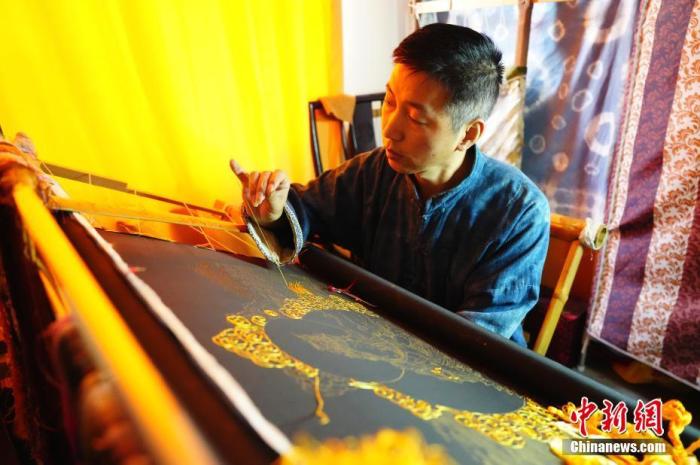
Liu Yunfan, an inheritor of Wushan embroidery, which is an intangible cultural heritage item in Tianshui city, northwest China's Gansu Province, works on an embroidery piece featuring Dunhuang elements. (Photo/Xie Bingxi)
Liu has been obsessed with embroidery since he was a child. As a middle school student, he learned from a relative who ran a business along the Silk Road that the famous route was a source of inspiration for many embroiders. Since then, he has been to Dunhuang many times to learn about Dunhuang embroidery.
In recent years, Liu has showcased the craft of Gansu embroidery to foreign diplomats from various countries, and many of his works incorporated elements of Dunhuang. One of his works, titled "A Road of Jade and Silk" won gold award of "Bai Hua" Grand Award for Chinese Arts and Crafts, China’s top accolade in arts and crafts. Another piece by Liu is being preserved at the Dahan Institute of Technology in China's Taiwan region.
Liu disclosed that he has been studying ancient Dunhuang embroidery in the last two years. These days, his research efforts have entered a new stage, focusing on needlework, coloring, pattern design and connotations of Dunhuang embroidery. These works will soon be displayed in museums or through publications.
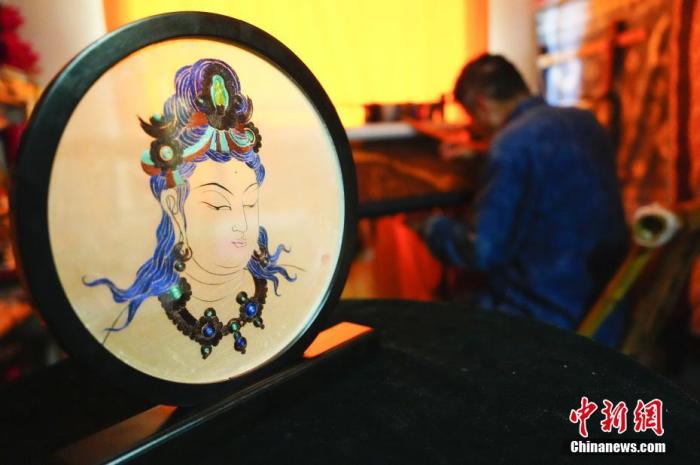
Photo shows an embroidery work by Liu Yunfan, an inheritor of Wushan embroidery, which is an intangible cultural heritage item in Tianshui city, northwest China's Gansu Province. (Photo/Xie Bingxi)
Recently, school uniforms with elements of Dunhuang murals embroidered on them have wowed many net users, including Liu, who was greatly inspired by them.
Liu said he will speed up his efforts to revitalize Dunhuang embroidery by incorporating it into cultural and creative products so that the ancient craft can gain popularity among young people and thus be passed on more effectively.
Photos
Related Stories
- Beautiful view in Mingsha Mountain and Crescent Spring scenic spot in Dunhuang
- Dunhuang elements on school uniforms
- School uniforms integrating Dunhuang culture capture wide attention
- Yi ethnic group invigorates traditional embroidery
- Master artist devotes over 40 years of her life to passing on time-honored tradition of Shu embroidery
- Dancers bring ancient Dunhuang murals to life
- Dunhuang's ancient beauty shared in digital form
- Inherited ethnic embroidery culture becomes new money-maker for residents in NW China’s Qinghai
- Rural women weave in prosperous lives through embroidery
- Villagers harvest apricots in Dunhuang, NW China
Copyright © 2022 People's Daily Online. All Rights Reserved.







